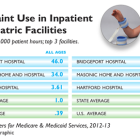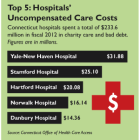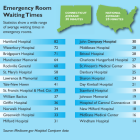Fines & Sanctions
18 State Hospitals Penalized For High Infection Rates
|
Eighteen Connecticut hospitals will lose 1 percent of their Medicare payments in 2016 as a penalty for comparatively high rates of avoidable infections and other complications, such as pressure sores and post-operative blood clots, according to new federal data. The Centers for Medicare & Medicaid Services (CMS) announced this month that 758 of the nation’s hospitals – about 23 percent of all eligible hospitals — would be penalized for patient safety lapses in the second year of the Hospital-Acquired Condition Reduction Program, which was mandated by federal health care reform. The penalties are based on rates of infections and other complications that occurred in hospitals between 2012 and 2014. The 18 hospitals in Connecticut include larger urban institutions, such as Yale-New Haven, Hartford and Bridgeport hospitals, and smaller hospitals, such as Manchester Memorial and Windham. They are among hospitals in the worst performing quartile nationally on patient-safety measures including the frequency of central-line and catheter-related infections, post-operative sepsis and accidental laceration.








